Who is behind Mexico's drug-related violence?
- Published

Most of the violence is attributed to fighting between rival drug gangs
Tens of thousands of people have been killed in drug-related violence in Mexico over the past seven years.
Most of the violence is attributed to fighting between rival drug gangs for control of territory and drug shipment routes. Who are these groups and who are they fighting against?
Who are the main players?
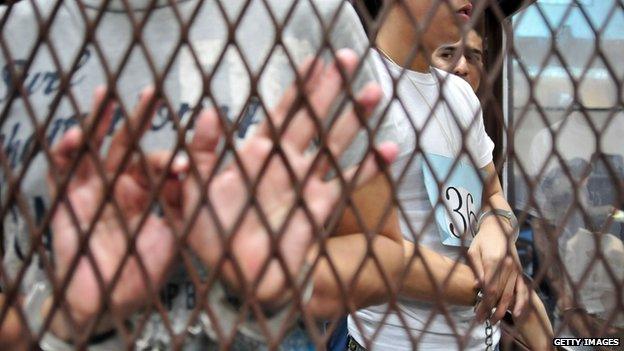
The Zetas are one of Mexico's largest cartels, with operations in Central America as well as Mexico
Mexico's largest and most powerful drug gangs are the Zetas and the Sinaloa cartel. The Zetas operate in more than half of Mexico's states and, according to US geopolitical analysis firm Stratfor, overtook their rivals from the Sinaloa cartel in 2012 in terms of geographic presence. Stratfor says the Zetas' brutal violence gave the gang an advantage over the Sinaloa cartel, which prefers to bribe people.
However, the Zetas have reportedly been weakened by the loss of their long-time leader Heriberto "El Lazca" Lazcano, who was killed by the Mexican military in October 2012, and his replacement, Miguel Angel Trevino, who was arrested in July 2013.
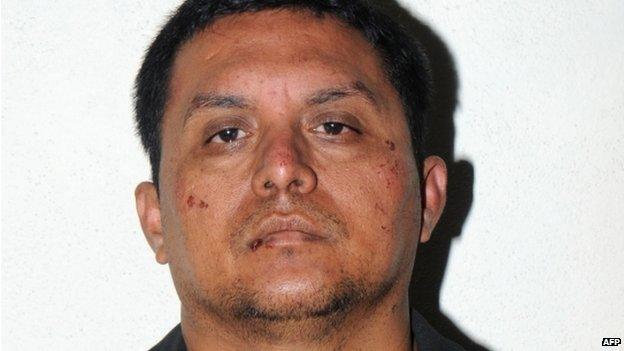
Mexico's government hailed the arrest of Zetas leader Miguel Angel Trevino as a great success
Other influential and violent cartels are the Knights Templar, the Gulf cartel and the Cartel Jalisco Nueva Generacion.
What do the cartels do?
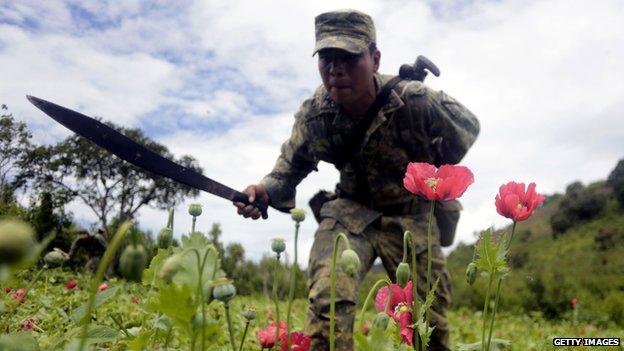
Cartels control much of the heroin, cocaine, methamphetamines and marijuana trades
Mexico's cartels control much of the illegal drugs trade from South America to the United States.
They import cocaine from South America and smuggle it on to the US. Some groups grow and smuggle marijuana, while others have specialised in manufacturing methamphetamines, importing precursor drugs from as far away as China.
Most cartels also extort local businesses and bolster their finances through kidnappings for ransom. They have also been involved in people smuggling, prostitution rings, intimidation and murder,
Who is fighting whom?
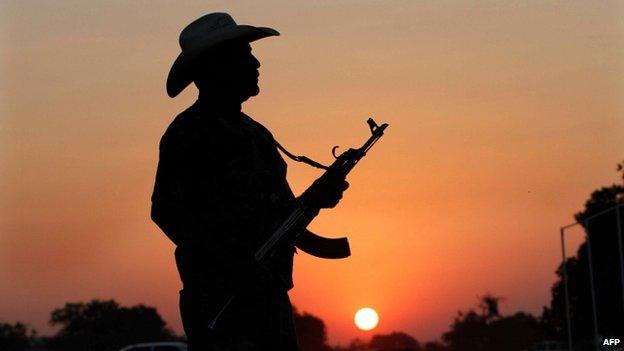
Vigilante groups have entered the fray in Mexico, arguing that federal forces cannot protect them
Government security forces are fighting the drug cartels in an attempt to re-establish law and order. Rival cartels are at war with each other in bitter territorial battles.
There is also internecine warfare between cartel members, and the emergence of break-away factions is not unusual.
The Zetas, for example, were first created as the enforcement arm of the Gulf cartel, but later turned on their former allies and have been at war with them ever since. The Knights Templar are an off-shoot of La Familia Michoacana, a cartel that was weakened after the killing of its leader in 2010.
Allegiances shift, and former rivals sometimes band together to fight emerging groups.
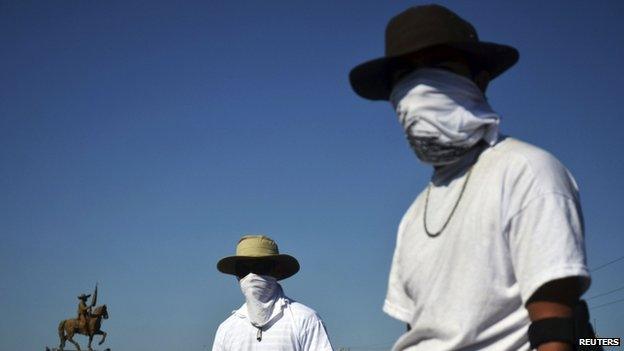
Vigilante groups have emerged in the western states of Guerrero and Michoacan
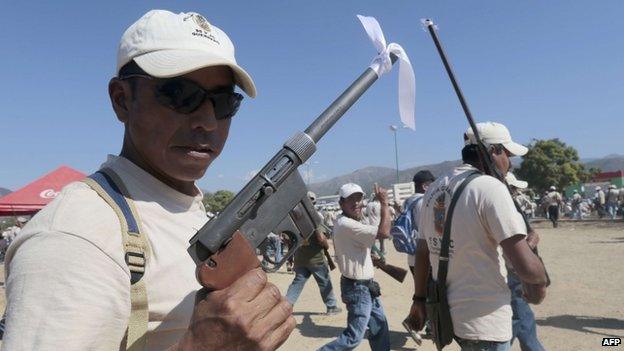
Dressed in their trademark white clothes, they have taken control of a number of villages and towns
Vigilante groups made up of civilians who say they are fed up with the lack of action by the security forces emerged in 2012 in the western states of Michoacan and Guerrero to fight the Knights Templar.
The Knights Templar have accused them of being in league with their rivals from the Cartel Jalisco Nueva Generacion.
What has been Mexico's strategy to tackle drug-related violence?
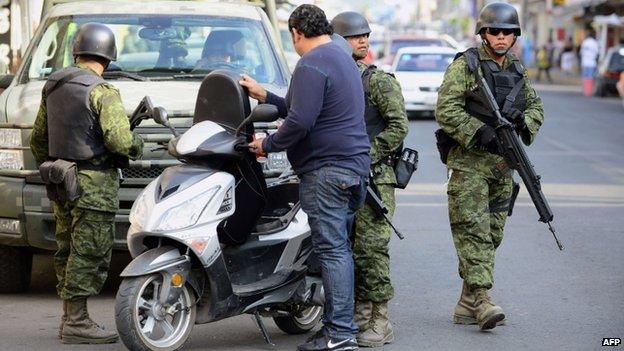
The army has been deployed to Michoacan where violence has been on the rise over the past months
Before taking up office, President Enrique Pena Nieto said he would break with the approach of Felipe Calderon, his predecessor.
Mr Calderon had deployed the army to go after cartel kingpins and had declared "war" on the drug gangs.
Mr Pena Nieto promised a lower-profile approach aimed at tackling the violence on a local level by setting up a national gendarmerie to take over from the troops.
But with growing violence in Michoacan, he too sent the army to back up federal and local police forces.
He also struck a deal with vigilante groups, allowing them to keep their weapons as long as they agreed to be integrated in the official security forces.
Where are the worst hit areas?
According to a study by international think tank Institute for Economics and Peace, external, northern Mexico continues to be the region worst affected by drug-related violence due to its proximity to the United States, the region's most important market for illicit drugs.
But Guerrero on the Pacific coast and central Morelos state have joined the list of most violent states, suggesting the cartels are extending their area of influence.
A study by Mexico's Citizens' Council for Public Security and Penal Justice, external suggests the city of Oaxaca has the highest occurrence of violent crime, followed by the resort town of Acapulco and Cuernavaca in Morelos state.
